Presenting Your Best Professional Self on LinkedIn: 2021 Edition
/LinkedIn is constantly evolving and now offers ways to make a profile page more compelling
With over 740 million active users in 2021, LinkedIn is by far the global leader in professional networking sites. According to the American Bar Association, it is also the most popular social network among lawyers and used by most law firms.
To boost your professional relevance online, try some of the platform’s new features. And if your profile page is not what it should be, here are some more edits to make, along with these tried-and-true tips.
Upgrade your images…
Conventional wisdom and LinkedIn best practices call for updated, professional profile and background pictures. If you want to take your profile presence to the next level, consider adding a video introduction.
LinkedIn Stories launched in 2020, modeled on similar features of Instagram and Snapchat. Stories only allow for 20-second messages and disappear after 24 hours, so they are more to add interest or call (brief) attention to professional news than for serious networking.
Craft a compelling “About” statement
The most important thing to remember when filling out this section — or any narrative text on your profile page — is that the LinkedIn algorithm is smart and picky. Feed it some keywords that can do some heavy lifting for you.
Make strategic use of descriptive keywords in telling your story but avoid the overused and trite. Here's a hint: try to find meaningful substitutes for "specialize," "experienced," "leadership," and "skilled," which are among the most overused LinkedIn profile words.
Pay close attention to your headline, job titles, and detailed descriptions
The headline is arguably the most important component of a LinkedIn profile, so use its maximum 220 characters to express exactly who you are. Don’t let it default to your current job title.
Job titles located in other sections of your profile page are heavily weighted in LinkedIn’s search algorithms, so make sure they are accurate, descriptive, and complete. For example, if you are a corporate lawyer specializing in tax disputes, include that in your title.
And there are crucial ways to make your job history stand out on LinkedIn by communicating the right information:
Make your job descriptions work hard by describing what you actually do (or did) at each job listed, in powerful detail. Do not just list the employer and your title!
Describe your specialties and highlight achievements using metrics to describe them, wherever possible. Did you deliver results for your clients? Quantify them! If you were the tax lawyer in the example above, you might add detail demonstrating how much time and money you’ve saved your clients.
If you are a manager or had management responsibilities, note how many people you have overseen and any results you helped them achieve. And always outline specialties and/or geographic areas.
Mention any positions you’ve held with responsibility for P&L and, again, quantify any key accomplishments.
Highlight your subject matter expertise and technical skills but stick to your core specialties. Listing too many “minor” skills gives the appearance of a jack of all trades and master of none. Focus on the expertise that you want to use in your next role.
If you have any certifications, show evidence of your up-to-date status. If you’ve passed related assessments, showcase these results. You can also ask people in your network to endorse you for specific skills, which will help your chances of being discovered for an opportunity using those skills.
Promote yourself with engaging new features
Both the “Featured” section and “Publications” allow you to showcase your best work and back up your job history with proof of your accomplishments. “Featured” appears directly under the “About” section and is a large space for displaying compelling pieces of copy with attractive images. LinkedIn also accommodates longer-form writing with its “Write article” function.
On the LinkedIn app, you can now record your name and display it on your profile to help others with pronunciation. Some LinkedIn members use the 10 seconds to add a quick tagline or something memorable about themselves or their business.
LinkedIn Live is another recent addition that is growing in popularity. According to LinkedIn, being live on this platform gets its broadcasters 24 times more comments and seven times more reactions than typical posts.
The “Open to Work” photo frame, added in June 2020, allows job seekers to give their profile picture a green circular #OPENTOWORK frame. If you choose this option, you can control who can see the frame; for example, limiting it to recruiters and not the entire network.
And don’t forget the basics…
Don’t forget to customize your URL. Be proactive about asking contacts for recommendations. Then get active with relevant posts and engaging activities. The more active you are on LinkedIn, the more the algorithm rewards you with exposure that could land you your next position.
LinkedIn is a powerful instrument for both passive and active job searchers, so it's essential to be strategic about your profile page — and test its strength using LinkedIn’s own gauge. Learning how to leverage all its new bells and whistles can greatly enhance your visibility and attract the right professional opportunities.
Carrington Legal Search is celebrating 20 years in business: we were in the trenches with our clients during 9/11 and 2008. We partner with our clients to identify leaders and mission-critical talent to shore up and grow companies even during the most challenging times. We are here for you! To make our nationwide network work for you, get in touch at 512-627-7467 or email carrie@carringtonlegal.com.


